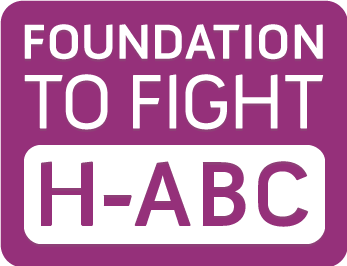How My Daughter’s Diagnosis Made Me into an H-ABC Leukodystrophy Expert
When we first heard of H-ABC leukodystrophy, there was very little data available. In fact, although the condition had been under investigation in Europe, it wasn’t until 2014 that the gene causing the defect was identified in the U.S. However, Elouise had symptoms that were progressing many years before we finally received the diagnosis (which happened when she was 8 years old).
At around age 3, Elouise began showing signs that something wasn’t right. She had balance issues, would often fall over, and experienced speech delays. After she started pulling up her right arm when running, a professional from the county’s Infants and Toddlers Program suggested we get an MRI, which confirmed the undersized cerebellum and the delayed myelination.
An Endless Journey of Test after Test
Prior to her diagnosis, we had gone through every test imaginable, including...
Heart tests
Lung tests
MRIs (which showed lack of myelination)
Motion testing
No one had answers, which is apparently not uncommon for many neurologic conditions. Therefore, some doctors gave generic diagnoses such as cerebral palsy. Others suggested conditions like ataxia that were tied to her symptoms.
One doctor even wanted to take a biopsy of her muscles and send it away for testing. At that point, we said she had been through enough. She had so many blood tests done.
Then, finally, a genetic doctor suggested performing genome sequencing, which is when they discovered she had the TUBB4A gene defect—otherwise referred to as hypomyelination with atrophy of the basal ganglia and cerebellum (H-ABC).
The Quest for Information on H-ABC Leukodystrophy
When we started researching the condition, we found only one or two references online at that time. Thankfully, there is much more data available now.
Once we received Elouise’s diagnosis, we were very worried and frankly didn’t know what this meant for her future, as the doctors were telling us she wouldn’t live into adulthood. After several months of shock, we decided to take matters into our own hands and get the word out. We created the nonprofit to help raise awareness and funds to assist with the research that was already underway.
We were not going to give up and let H-ABC leukodystrophy get the better of us.
Although it’s been a difficult journey, I’m grateful that I can now help other families. Parents are often the best resource experience wise, and those of us within the H-ABC community strive to offer one another as much support, education, and comfort as possible. I often receive questions from folks whose children have recently been diagnosed with the condition and want to learn more.
I’m glad that I’m able to direct those who have questions to our own website and the CHOP (Children’s Hospital of Philadelphia) website so they can educate themselves about the condition, what treatments are available to help with symptoms, and what work is being done in finding a cure. CHOP in particular is very responsive in helping families who are affected by H-ABC leukodystrophy, even those who are located overseas.

